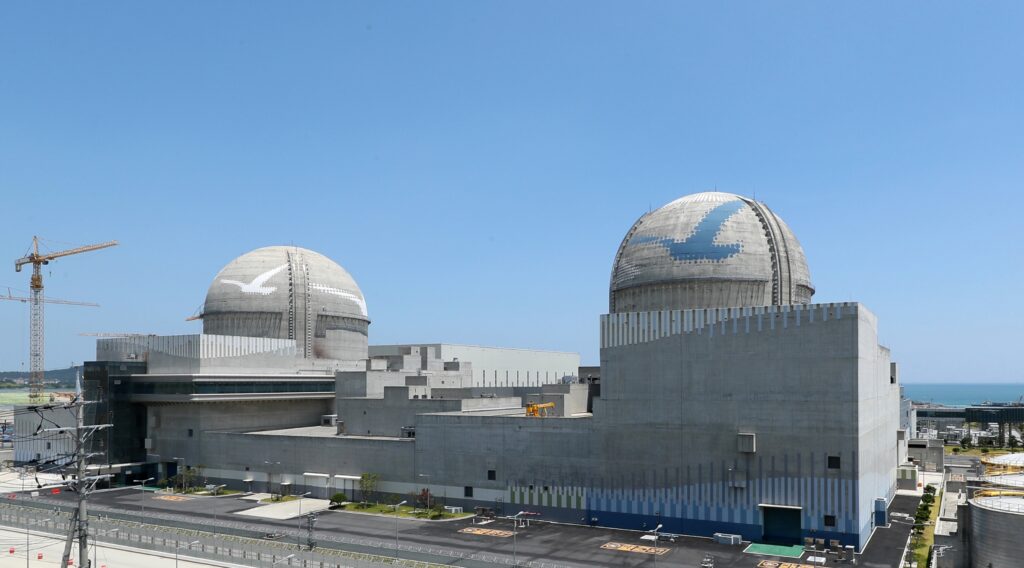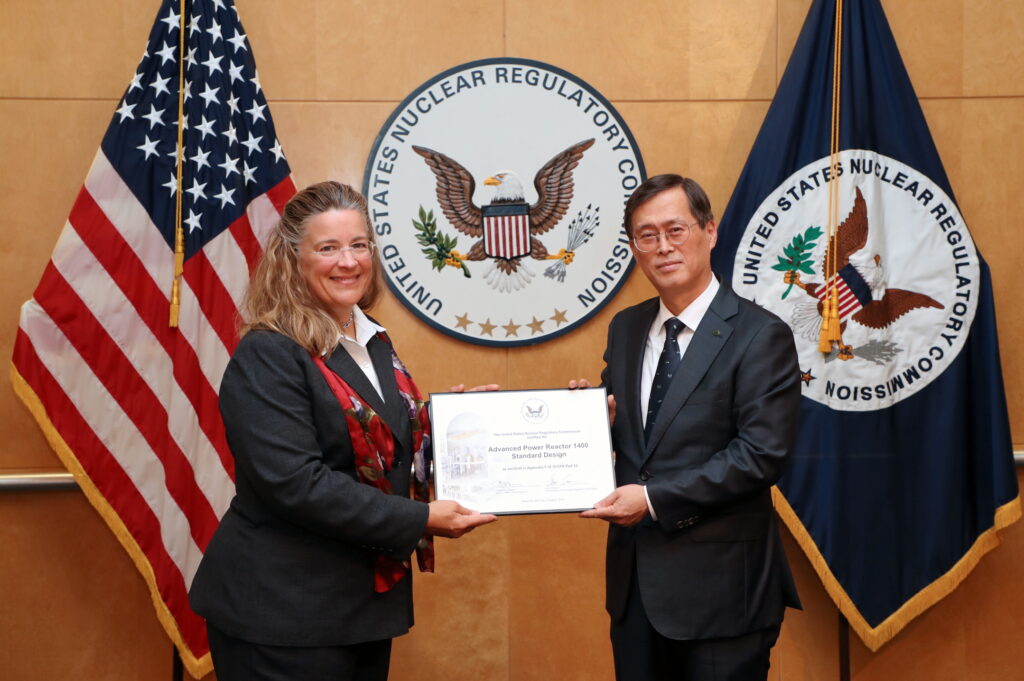Nuclear power has historically been the second-largest source of carbon-free electricity globally, providing about 10% of global electricity supply. South Korea, one of the world’s most prominent nuclear energy countries, strains every nerve to export its technology widely. Since introducing the first nuclear power plant in 1971, the country started developing its nuclear power technology, aiming to reduce external vulnerability to possible global fossil fuel shortages. The country has now acquired rapid and remarkable growth in nuclear technology. As of mid-2020, South Korea ranked sixth highest for nuclear generation capacity in the world, operating 24 commercial nuclear power reactors with 23 GW (gigawatt).
The United States and South Korea have had a strong partnership in the field of peaceful nuclear cooperation for more than half a century, and the US is quite pleased that its alliance has become one of the world’s leading nations in the development of peaceful uses of nuclear technology. A joint US-South Korea presidential statement made in May 2021 reaffirmed their more consolidated collaboration, by saying that “We commit to develop cooperation in overseas nuclear markets, including joint participation in nuclear power plant projects, ….” It is too early to calculate the actual benefits of the joint in that the where and how are yet to be clarified but it seems that the two parties would promote cooperation for nuclear export. It may assume the form of South Korea taking part as a supply chain component with the United States leading nuclear power plant construction.

This could be possible due to proven technologies and experience the country accumulated. In particular, Korea Hydro & Nuclear Power (hereafter, KHNP) has been playing a key role in developing nuclear technologies and power plant designs. It was splitted from Korea Electric Power Company (hereafter, KEPCO), which was once the country’s sole electric power utility until 2001, by taking charge of all the nuclear generation capacity with a small amount of hydro one. It is now responsible for about 30% of the country’s electric power supply.
KHNP designed the Optimized Power Reactor 1000 (OPR-1000), which is a pressurized water reactor with 1,000 MWe (megawatts electric). The APR-1400 is a more advanced and uprated one which is a light water reactor with enhanced safety features and economic efficiency. As a Generation III+ reactor, the APR1400 safety system is designed to prevent or mitigate critical accidents. The design incorporates passive safety systems, which work to ensure safe reactor shutdown, removal of decay heat, and the prevention of radioactive releases

The excellent design of APR1400 has been proven by global authorities. It passed the certification review of European Utility Requirements (EUR) in October 2017 and acquired Nuclear Regulatory Commission Design Certification (NRC-DC) in August 2019. Acquisition of NRC-DC means that the APR1400 can be constructed and operated in the United States. APR1400 is the first foreign case to receive a design certification in NRC. Although no regional or global licensing framework exists for nuclear power technologies, its achievements mean it has proven its safety and excellence globally, which let KHNP secure its foothold to expand its sales to additional markets including US, Europe and South Africa.
Overseas nuclear power projects of KHNP started with technical assistance for operation and maintenance provided to China Guangdong Nuclear Power Plant in May, 1993. In collaboration with the Korean government and relevant organizations, KHNP also has been actively carrying out global nuclear power projects around the world such as exporting its own standard reactor— APR-1400—and providing O&M (for Operation and Maintenance) services. Under the Joint project with KEPCO, KHNP was involved with the first export of Korean reactors into the United Arab Emirates. In December 2009, the APR-1400 was selected as the basis of the UAE’s nuclear power programme, under a $20.4 billion contract. KHNP provided its high-experienced manpower, technical support for construction management and performed commissioning, training service, and operation support services, which was a major boost for KHNP.
KHNP was also selected as the final supplier in an international open competition to supply UPS voltage stabilizer for operating Cernavoda nuclear power plants in Romania, worth 7 million EUR. It is more meaningful that KHNP landed the project through cooperation with small and medium-sized Korean companies. The items ordered this time are the main facilities of a key nuclear power plant system for an uninterruptible power supply and require a high level of quality management. The company is expected to gain strong momentum to continue in taking orders in the future as periodic replacements are needed during the operation of nuclear power plant operations.
Likewise, KHNP has also mapped out its own groundwork for new market development and order receiving by strengthening collaboration with nuclear power plant operators around the globe such as Czech Republic, and Poland. KHNP will further develop nuclear technology, by speeding up the development of a small module reactor (SMR). SMR is drawing much attention as a next-generation nuclear power generation method as it generates less than 5% of the electrical output of a conventional nuclear plant. SMRs can also cut costs and improve safety allowing nuclear power plants to be built underground on a smaller site and in a shorter construction period.
Once nuclear power has been losing ground because nuclear power is at issue competing against other resources, more economic alternatives, such as natural gas or modern renewables. With concerns over safety and broader public acceptance remain obstacles to development, nuclear power faces an uncertain future in some countries. Nevertheless we also have to keep in mind that it has significant potential to contribute to electricity security in multiple ways. Nuclear plants help to keep power grids stable and can be a good complement in decarbonisation strategies since, to a certain extent, they can adjust their operations to follow demand and supply shifts, according to the explanation of the International Energy Agency.
For those interested in the benefits of nuclear power, past accidents have led towards a push for innovation in the field. With the foremost KHNP, South Korea is equipped with enough competitive advantage compared to global competitors. It is expected for KHNP to expand globally with its strong supply chain covering the entire nuclear power plant cycle, including design, construction and operation, and abundant experience of several decades both at home and abroad.
Kayla Hong
Asia Journal



